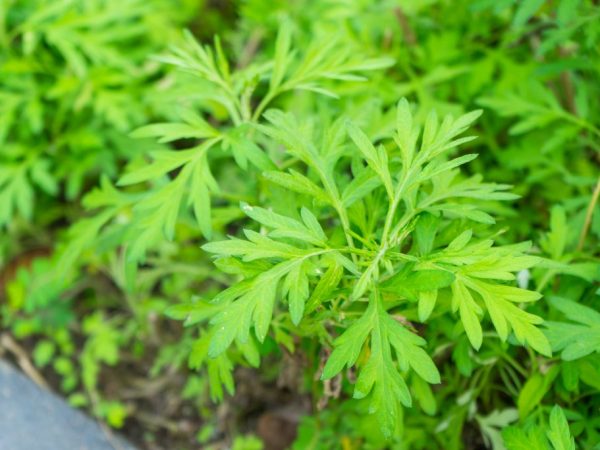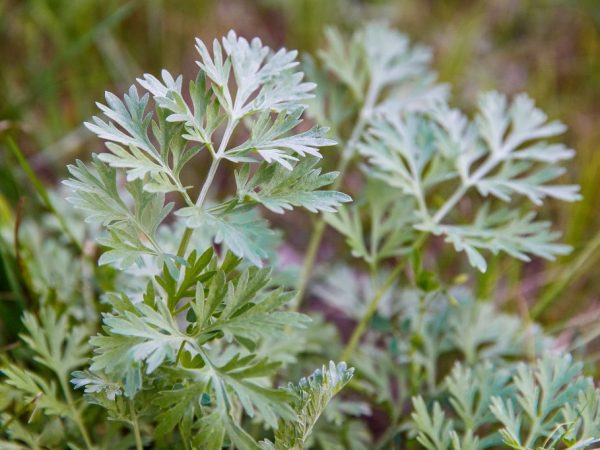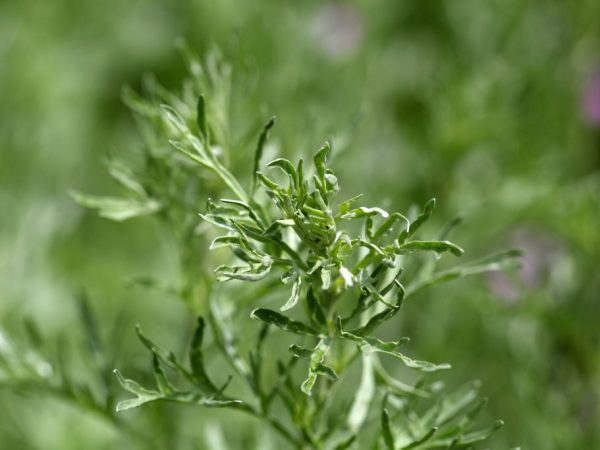Description of annual wormwood
The herbaceous plant of the genus wormwood has several types. A special place is occupied by annual wormwood due to its wide range of applications. It is used for medicinal purposes and in various other fields (gastronomy, cosmetology, chemical industry, etc.). What is the herb, where does it grow, how is it used? Are there any contraindications to its use?

Description of annual wormwood
Scientific classification
Wormwood is a member of the Aster family of the order astrocytes. Class dicotyledonous, angiosperm division (flowering). International scientific name in Latin: Artemisia annua.
Grows in bushes. The bushes are in the shape of a pyramid, can reach a height of 1-1.5 m, as a result of which they are often planted along the boundaries of the site in the form of a hedge. Blooms from mid to late summer. Fruits appear from August to September.
What the grass looks like:
- Stem. Height from 30 cm to 1 m. Erect, glabrous, ribbed. Young shoots of bright green color, growing, it gradually acquires a brown or purple hue.
- Leaves. Attached to the stem with short petioles, the arrangement of the sheets is alternate (in a spiral). The color is dark green, bottle. Size - from 2.5 to 10 cm in length and 2.5 to 4 cm in width.
- Flowers. Unsightly, small, yellow. They are located in hemispherical baskets forming a paniculate branched inflorescence. The basket is on a thin leg with a length of 1 to 3 mm. At the edges of the basket, female flowers are localized, having a filiform tongue, in the center there are bisexual flowers of a goblet-tubular shape.
- Fruit. They are an elongated flat single-seed.
What does it consist of
The composition of an ordinary annual herb contains many useful substances:
- essential oil;
- tannins;
- vitamin C.
In addition, a substance was found in it - the sesquiterpene lactone artemisinin. It is widely used as a treatment for malaria.
According to the description, essential oil is composed of a variety of chemicals, including acids (ethane, butane), alcohols, camphor, Borean camphor, camphene, eucalyptol, cadinene, pinene, caryophyllene. They give the characteristic fragrant aroma of freshness, wood.
Growing places

Drought tolerant plant
In Russia, wormwood is not very common. It mainly grows in Eastern Siberia, the European part of the country, in the Caucasian foothills.
Most often it can be seen in the south and southeast of Europe, in some countries of Central Asia, in Belarus, Moldova, Ukraine, Kazakhstan, China, Mongolia, Vietnam, Iran, North America.
Grows wild on sandy soil, in fields, along railway tracks. It grows around houses, on lawns, in city parks and squares. Possesses increased drought-resistant properties, disease resistance.
Healing effect
The healing and restorative properties of the herb have been known since the days of Ancient Rome.
- heals wounds, burns, eczema, pustular and other skin lesions;
- enhances immunity;
- improves appetite;
- promotes weight loss;
- relieves worms;
- normalizes the work of the gastrointestinal tract;
- has antipyretic, antimicrobial, anti-inflammatory effect.
The annual variety (annua artemisia) successfully fights the following diseases:
- anthrax;
- malaria (formerly known as swamp fever);
- tuberculosis of various organs and systems;
- urolithiasis disease;
- renal and hepatic diseases;
- pathology in the field of gynecology.
Information: official medicine confirms that wormwood in the form of an extract can even fight cancer. The main condition is the correct dosage of the product and the use of an annual herb, and not a perennial or a slide. Because, for example, bitter has more alkaloids in its composition.
Recommended recipes
It is used as a medicine in a fresh or dry version, as well as in the form of an extract, tincture, decoction, ointment.
Improved appetite
To improve appetite, use the following recipe from annual wormwood:
- take 1 tbsp. a spoonful of herbs;
- pour 1 glass of boiling water;
- put the resulting mixture on low heat;
- boil for 10 minutes;
- strain thoroughly.
Drink 1-2 teaspoons before each meal.
Important! To achieve the maximum effect of the treatment, it is necessary to strictly follow all the recommendations for preparing and taking the drug.
Against malignant neoplasms

Wormwood is used in oncology
Tincture of annual wormwood has some contraindications for use, but it is still less toxic than chemotherapy, which is widely used against cancer.
Cooking method:
- warm up alcohol or moonshine to 40 ° C;
- place wormwood roots in a glass container;
- pour alcohol over the roots so that it completely covers them and the liquid level is 2-3 cm higher;
- insist for 15 days.
Consume three times a day, diluted with 1 tbsp. l. in 50 ml of warm water, half an hour before meals.
The tincture can be purchased at a pharmacy. Take also diluted with water, from 10 to 15 drops of the drug.
Information: the prepared tincture can be used as a compress applied to the tumor area.
For the treatment of cancer
Annual wormwood in the form of a decoction is suitable for those who do not tolerate alcohol. Well helps with cancer of the liver, lungs, blood, gastrointestinal tract, rectum, female genital organs.
For cooking, you need a rhizome of the herb: pour boiling water over 1 tsp of the crushed product. Let it brew for 40 minutes, drain. Drink 4 times a day before meals. The duration of treatment is 10 days, then take a break for several days and repeat the appointment. It is necessary to conduct 3 courses.
Advice: for malignant tumors of the ovaries or uterus, douching or microclysters with wormwood broth (200 ml) diluted with 1 liter of warm water is recommended.
Restrictions on use
In addition to useful healing properties, there are also contraindications to the use of the product:
- allergic reaction;
- pregnancy, breastfeeding;
- venous diseases;
- nervous disorders;
- stomach ulcer.
In this regard, it is not recommended to self-medicate. Only a doctor will be able to correctly determine the required dose, duration of admission, and also assess the possible risks from use.
Other areas of use
In addition to medical purposes, wormwood of this type is also used in other areas:
- Cooking. Young leaves are recommended as a fragrant spicy seasoning for meat. The seed is added to products from cereals, flour, tea is brewed.
- Chemical production.The aerial part of the grass is used to create a red dye - for dyeing leather products, natural fabrics, rhizomes - lemon yellow, for dyeing woolen, silk and leather things.
- Perfumery industry. Essential oil is used as a perfume in the manufacture of perfumes, eau de toilette, and cosmetics. It is also added to some types of soap.
Conclusion
Due to its versatility, the herb is in great demand in various spheres of life. For greater efficiency, it is advisable to collect it away from highways.
Wormwood annual has unique healing properties and a broad spectrum of action. The main thing is not to forget about the possible negative consequences of improper use.


